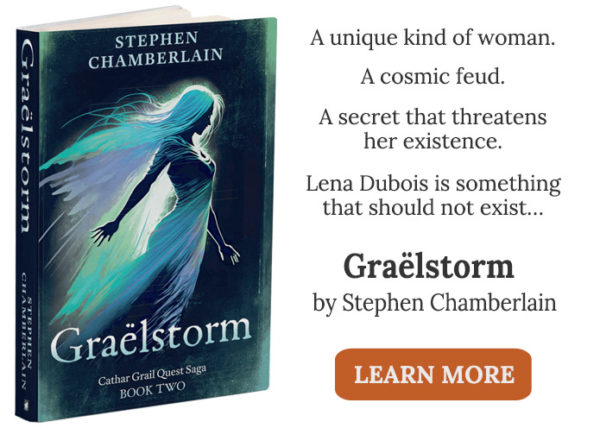“The original quality in any man of imagination is imagery.” – Gilbert K. Chesterton
Evolution of Imagery
Storytelling began with visual stories such as rock art and cave paintings. Later, oral and written traditions emerged with the progress of language. Today, language plays a vital role in storytelling. It can be plain and succinct, or rich in imagery.
Imagery is painting with words. It’s using language to create images in readers’ minds to fuel their imagination. Writers can accomplish this through metaphorical and figurative descriptions in poetry or prose, but I want to focus on the expressions we use in dialogue, in particular idioms and proverbs.
Whatever your mother tongue, odds are you use commonplace sayings in everyday speech. I’m talking of those little turns of phrase that evoke visual images to help us express our thoughts to others—for example, when we describe someone as a blue-eyed boy or say that “it’s raining cats and dogs.”
Idioms are familiar phrases we use to make observations. They have a figurative meaning not to be taken literally. For instance, to say “break a leg” does not mean we are wishing someone harm; we are wishing them good luck. And to “let the cat out of the bag” means to tell a secret by mistake rather than coming to the rescue of a captured feline. There is a host of such expressions in English, such as “beating around the bush,” “spilling the beans,” “a storm in a teacup,” and ”putting something on ice.”
A proverb is another type of expression we quote to give advice: “A watched kettle never boils;” “Silence is golden;” “A bird in the hand is worth two in the bush.” Although not all proverbs are figurative, many contain imagery, like the phrase “Don’t cry over spilt milk,” which means don’t get upset over something that has already been done.
Context is essential for understanding these figures of speech, and they are by no means universal. Some phrases have versions of one another in different languages, although they may not use the exact words. English people use the expression “when pigs fly” to imply improbability, whereas Germans say, “when pigs whistle.” The French, however, use the phrase “when hens have teeth.” And while English people describe angry people as “losing their rag,” the French describe them as having “mustard up the nose,” while Germans talk about them “bursting their collar.”
Figures of speech can be culture-specific, but what they often have in common is their use of imagery to get their point across. Despite being passed on by word of mouth, their endurance comes down to the fact that they are easy to visualize.
Imagery in Story Dialogue
The list of idioms and proverbs is never-ending and so ubiquitous are they in conversation, they may easily creep into the fictional dialogue we write. Dialogue should reflect the way we speak, but writers of speculative fiction must be wary of the pitfalls. Many sayings may not be appropriate for invented species from worlds outside our own. Would a scaly, lizard-like alien talk about “splitting hairs?”
One solution would be to avoid sayings and colloquialisms entirely, but while not all of them employ imagery, that would risk robbing story dialogue of richness and colour. Imagery has the power to immerse the reader in a scene. It paints a picture that is understood.
Shunning imagery may also deprive writers of the opportunity to build credibility in readers’ minds. A willing suspension of disbelief is essential if readers are to overlook the fiction and become invested in the story. In English literature, authors write dialogue in English even when otherworldly characters are speaking a fictional language. By doing so, the author is translating the “foreign” dialogue for the benefit of the reader. Readers know this and accept the convention, but introducing ubiquitous human sayings can undermine that illusion. If horses or geese don’t exist in a character’s world, how could they warn someone to never to look a gift horse in the mouth or describe an activity as a wild goose chase? Details like these can make all the difference to the suspension of disbelief. So why use human expressions, when adapting a saying or substituting an invented axiom would add to the portrayal of the character’s otherworldly reality?
Take the Harry Potter series. Wizard dialogue is full of expressions that use visual images drawn from their magical world. Characters talk about getting their “wand in a knot,” a play on getting one’s “knickers in a twist” or setting the “cat among the pixies,” equivalent to “cat among the pigeons.” These adapted sayings ground the reader in Harry’s fictional world, and although many of them are derived from Muggle expressions, they work because wizards are magical humans. They live on Earth, and it makes sense they have adapted Muggle colloquialisms. This logic would not work if wizards and witches were a different species, or if they hailed from another planet or realm. By contrast, George R. R. Martin conjures a powerful image of violence in fictional Westeros with the saying, “He who passes the sentence should swing the sword.” And who could forget the Star Wars catchphrase, “May the Force be with you” to wish someone good luck?
Mea Culpa
Here’s where I hold up my hand. I’m aware of English sayings creeping into my own fantasy writing, because my editor has picked me up on them. In the manuscript of my soon-to-be published novel, Graëlstorm, revisions came back from her with brief notes in the margin, such as “Too Earth-like an expression, please change.”
I set my first novel, Graëlfire on Earth, and all its characters speak English. But the sequel, Graëlstorm takes place in a universe far from Earth, and although I wrote the dialogue in English, non-human characters speak among themselves in extraterrestrial languages and dialects. As my editor points out, I should ground their idioms in the world they come from, using phrases that are less human-centric.
Some expressions were easy to rewrite without resorting to imagery. For example, when one of my non-human characters used an English expression “we must nip it in the bud,” I replaced it with a straightforward phrase “we must address it immediately.” Similarly, I changed the expression, “ignorance is bliss” to “some things are better not to know.” But in other cases, I substituted invented idioms to replace the English ones. For instance, I used the expression “haifish would run first” in place of “fish might fly” and “sharp as an ulfür’s claw” instead of “sharp as a razor.” I also substituted the proverb “Apples don’t fall far from the tree” with “As the root, so each branch” to express the idea that like begets like. Likewise, to have someone’s “guts for garters” became to come down on someone’s head “like a shower of meteors.” And “the elephant in the room” became “the invisible mountain to be scaled.”
Every language has idiomatic phrases, and if a writer invents a new species, it will be more authentic if their characters express themselves using imagery drawn from their own place and time. They should speak these phrases without explanation, as we do in our own everyday speech. That means the gist must be obvious enough that the reader can decode it from the context. That is essential to using imagery in dialogue.



